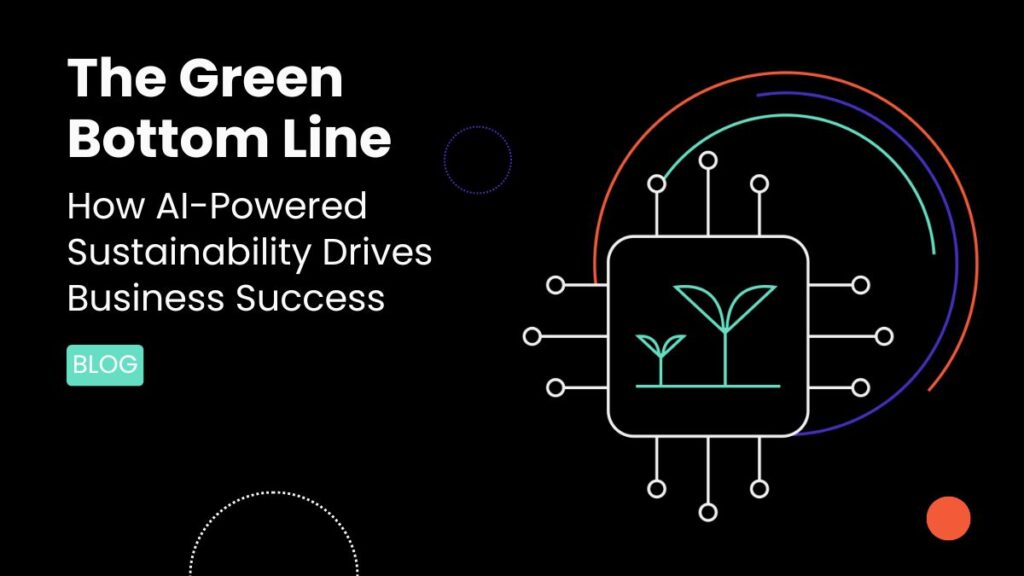
How AI-Powered Sustainability Drives Business Success
In today’s business landscape, financial efficiency and environmental sustainability are no longer separate goals. They’re two sides of the same coin, and savvy companies are leveraging AI-powered solutions to address both simultaneously. This approach, combining the principles of GreenOps and FinOps, is transforming how businesses manage their IT resources and environmental impact.
The pressure for change is mounting. With the EU’s Corporate Sustainability Reporting Directive now in effect and similar regulations emerging globally, companies face increasing scrutiny of their environmental impact. But it’s not just about compliance; talent acquisition and customer expectations are increasingly influenced by a company’s sustainability efforts. The message is clear: sustainability is no longer optional; it’s a business imperative.
Enter the world of GreenOps and FinOps. While FinOps focuses on maximising the business value of cloud investments, GreenOps aims to optimise IT environments for sustainability alongside cost and performance. Together, they create a powerful framework for aligning technology investments with both business value and environmental responsibility.
But how does this work in practice? Let’s look at a real-world example. Sportradar, the world’s leading sports technology company, faced challenges in managing their cloud costs as they scaled their operations. They turned to an AI-powered solution, Apptio Cloudability, to gain visibility into their cloud spend.
The results were transformative. As Ian Poland, Chief Information Officer at Sportradar, puts it: “We have an obsession with data because that’s the business we are in. We understand the importance of data. With Apptio Cloudability, we have a greater level of clarity. We now have real insight that we never had before.”
This insight allowed Sportradar to calculate unit economics, lower transaction costs, and make informed decisions about technology investments – all while scaling their systems to meet growing demand. They achieved greater cloud cost transparency, enabling them to understand the value delivered by their cloud spend. They even lowered transaction costs by identifying inefficiencies in their use of services like Amazon DocumentDB and AWS Fargate.
But perhaps most impressively, Sportradar implemented “rightsizing sprints” to optimise workloads, resulting in significant savings. As Scott Dunbar, Director of Engineering Enablement at Sportradar, explained, “We plan in rightsizing sprints. We expose the rightsizing data out of Cloudability, ring-fence a portion of our resources, and focus on rightsizing our workloads. The first time we did this, we saw a significant amount in savings.”
Read the full case study here >
This example illustrates the power of AI-powered sustainability solutions. These tools offer comprehensive tracking of IT carbon footprint across cloud and on-premises infrastructure, align sustainability metrics with business applications and services, calculate efficient carbon unit costs, and provide actionable insights for improvement.
The economic benefits are clear: cost savings through resource optimisation, improved forecasting and budgeting capabilities, risk mitigation by avoiding potential fines and reputational damage, and enhanced decision-making through data-driven insights.
But the benefits go beyond the bottom line. By optimising resource use, companies are also reducing their environmental impact. They’re using less energy, generating fewer emissions, and contributing to broader sustainability goals. It’s a win-win situation: what’s good for the business is also good for the planet.
As we move forward, the integration of GreenOps and FinOps, powered by AI solutions, will become increasingly crucial. Companies that embrace these technologies and methodologies will be better positioned to navigate the complex landscape of financial performance and environmental responsibility.
In an era where both economic efficiency and environmental stewardship are paramount, these AI-powered solutions offer a path forward. They provide the insights needed to drive efficiency and sustainability simultaneously, allowing businesses to thrive financially while contributing to a more sustainable future.
The message is clear: sustainability and profitability are not mutually exclusive. With the right tools and approach, they can go hand in hand, driving business success in a world that increasingly demands both. As more companies recognise this, we can look forward to a future where business success is measured not just in profits, but in positive impact on our planet.
